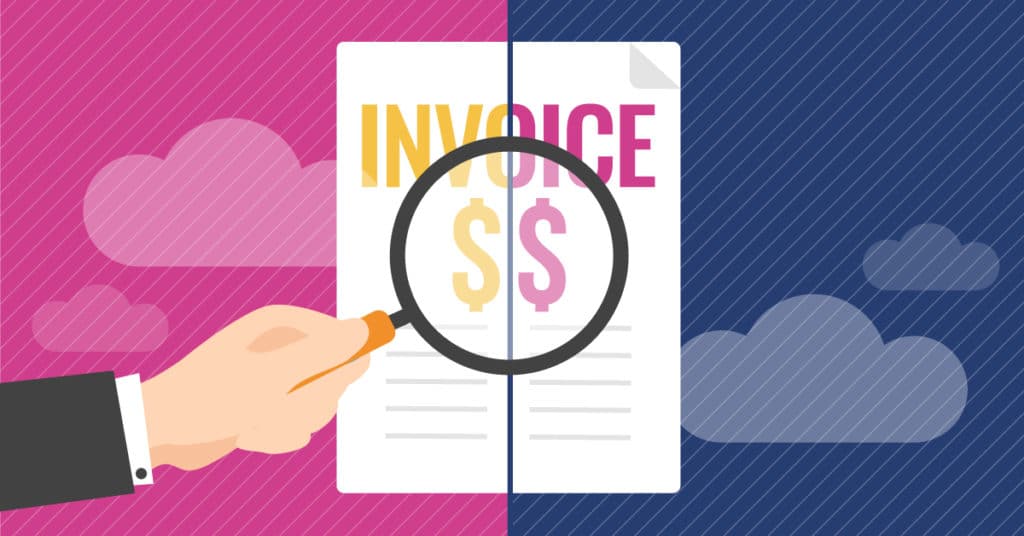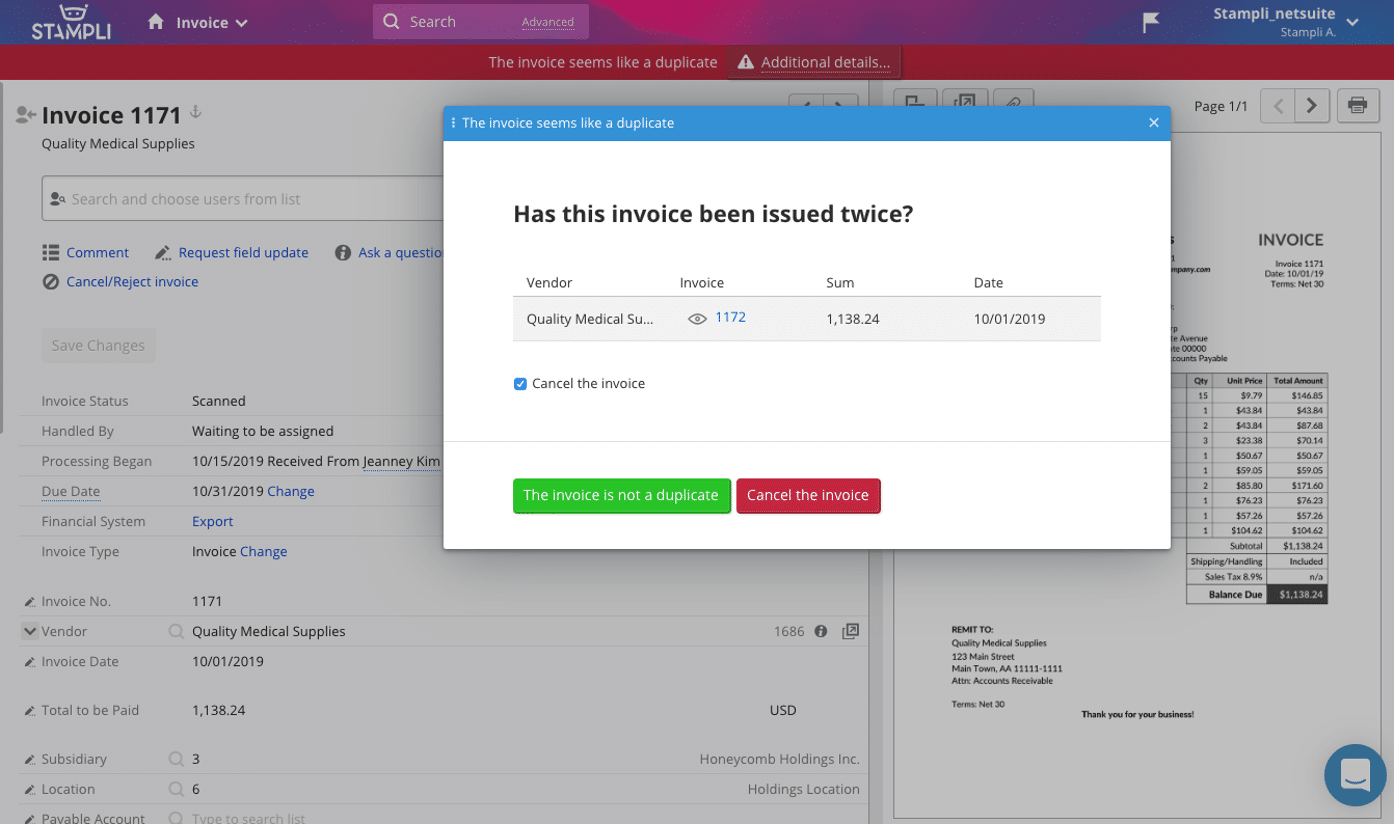How Stampli Helps Prevent Duplicate Payments on an Invoice

Companies can receive duplicate invoices for many reasons: vendors may send copies to several contacts in the organization, submit copies by mail and email, send reminder invoices, and resend with corrections or adjustments.
It can be nearly impossible and take countless, tedious hours to manually spot duplicates. Is this worth the savings and effort? What’s really at risk? A lot, actually. The risk ranges from paying twice to falling victim to a massive invoice fraud costing your company millions of dollars, just ask Google. Relying on manual processes and tribal knowledge doesn’t put the proper checks and balances in place for invoice management. Some guidelines are listed below that can help mitigate the risk of duplicate payments.
How To Prevent Duplicate Payments
- Receive all invoices in one central location
- Automate invoice entry
- Establish clear and consistent business processes with internal team and vendors
- Verify vendor information for accuracy, such as payment and billing address
- Review master vendor list regularly to deactivate old vendors and identify when vendors appear in system under similar names
Another option that can lower the risk and financial impact of making duplicate payments is AP automation. The Stampli platform can put these guidelines in place to help you automate your invoice management process. Stampli’s powerful AI robot, Billy the Bot, detects duplicate invoices by performing checks during three stages of the invoice lifecycle:
- When the invoice first enters Stampli
- During coding and registering
- When the invoice is exported to the financial system (if it is API-integrated)
First Check: Invoice Entry
When an invoice enters or is uploaded to Stampli, Billy checks if a prior invoice in the system has the same file name, size, and content. If this is the case, the invoice will not be entered or uploaded and an email is sent indicating the invoice has been previously submitted.
The following options are available:
- If the duplicate invoice is supposed to replace an existing invoice in Stampli, reject and cancel the existinginvoice prior to uploading the new version.
- If the new invoice is not a duplicate, then change the PDF file name and the invoice can be uploaded.
Second Check: Invoice Registration
After an invoice is coded and registered, Billy checks the following data against existing invoices:
- Invoice Number
- Vendor Name
- Invoice Date
- Total Amount
If three of these items match an existing invoice, a warning message appears at the top of the “Invoice Details” screen.

Stampli will identify an invoice as either an A) actual or B) potential duplicate.
If all three of the following matches, the invoice is considered a duplicate: Invoice Number, Vendor Name, Invoice Year. Stampli will identify it as a duplicate and show you a copy of the invoice already entered in the system.
If any other three combinations match besides Invoice Number, Vendor Name, and Invoice Year, the invoice is marked as a potential duplicate. You can compare with the invoice already in the system to confirm.

Third Check: Financial System Export for API Integration
When Stampli is integrated with your financial system’s APIs, Billy performs a third duplicate invoice check. Prior to sending the invoice to the financial system, Billy checks the following data against existing invoices in the financial system:
- Invoice Number
- Vendor Name
- Invoice Year
If a duplicate invoice is identified, the invoice will not be sent and an export error is displayed in the Export Problems tab.